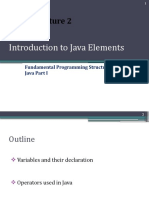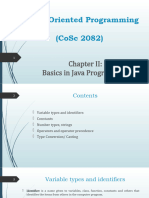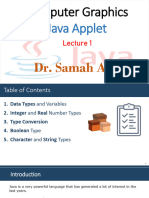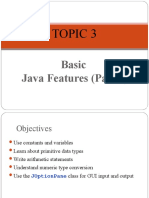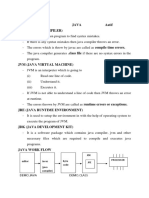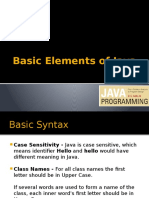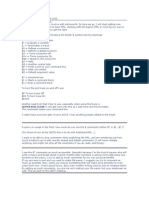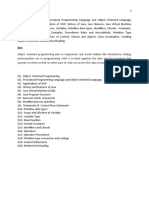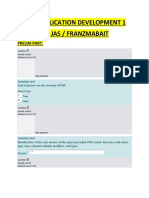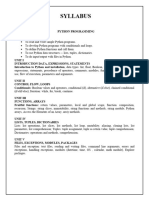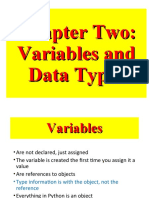0% found this document useful (0 votes)
41 views32 pagesJava Programming Basics: I/O, Data Types, Operators
The document discusses Java fundamentals including parts of a Java program, variables and data types, input/output, and operators. It covers the structure of a Java class, variables and literals, primitive data types like integer, float, boolean and char. Escape sequences, identifiers, naming conventions and Unicode encoding are also explained.
Uploaded by
warriord876Copyright
© © All Rights Reserved
We take content rights seriously. If you suspect this is your content, claim it here.
Available Formats
Download as PDF, TXT or read online on Scribd
0% found this document useful (0 votes)
41 views32 pagesJava Programming Basics: I/O, Data Types, Operators
The document discusses Java fundamentals including parts of a Java program, variables and data types, input/output, and operators. It covers the structure of a Java class, variables and literals, primitive data types like integer, float, boolean and char. Escape sequences, identifiers, naming conventions and Unicode encoding are also explained.
Uploaded by
warriord876Copyright
© © All Rights Reserved
We take content rights seriously. If you suspect this is your content, claim it here.
Available Formats
Download as PDF, TXT or read online on Scribd
/ 32











